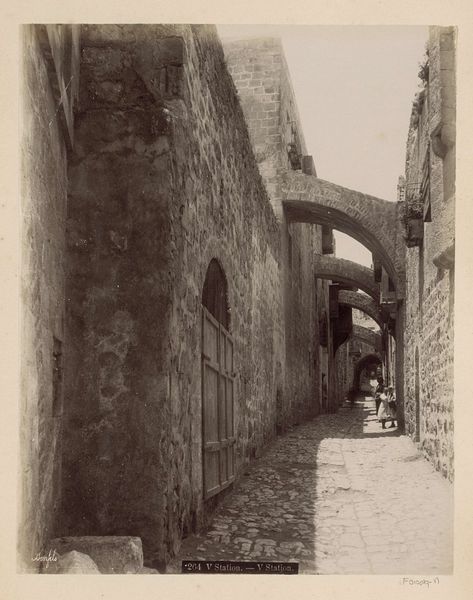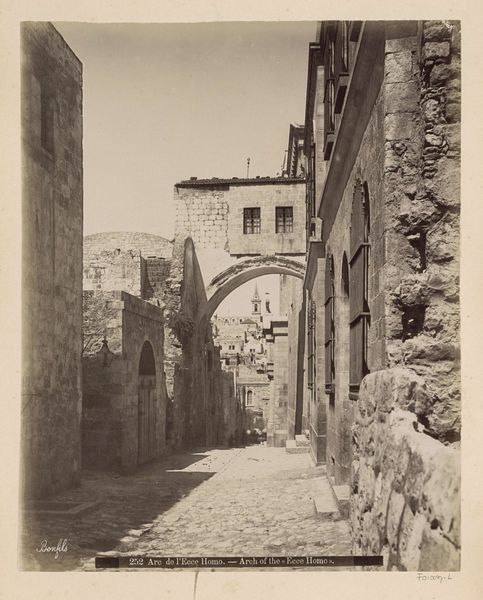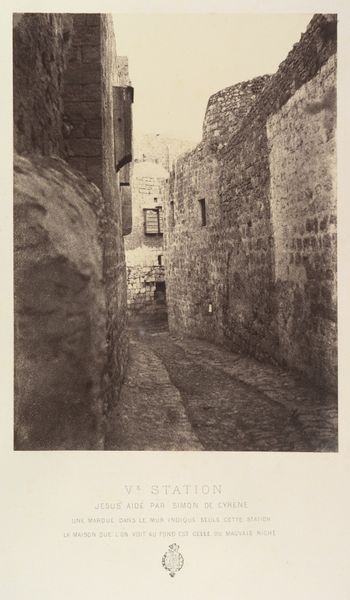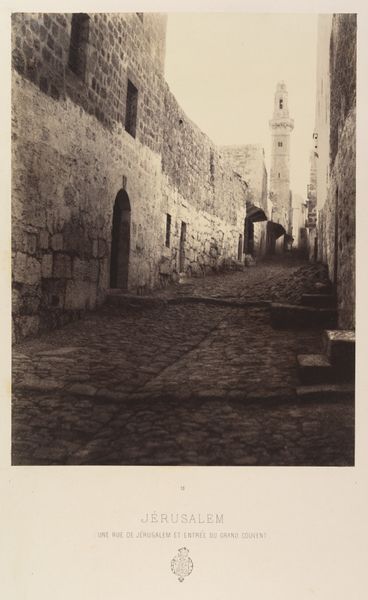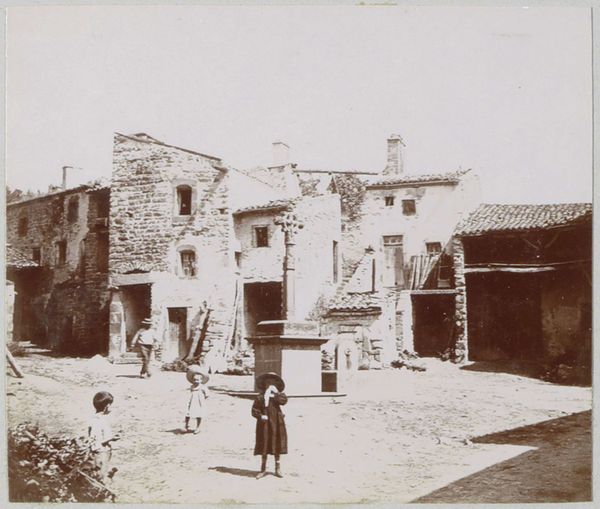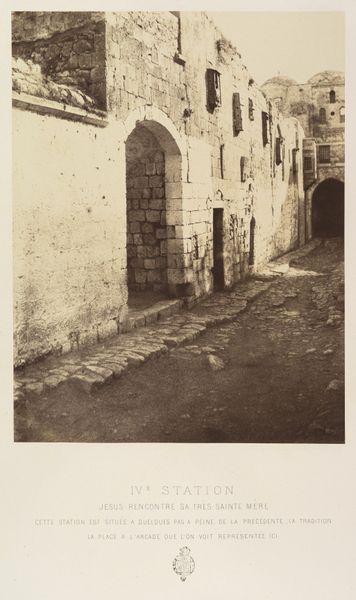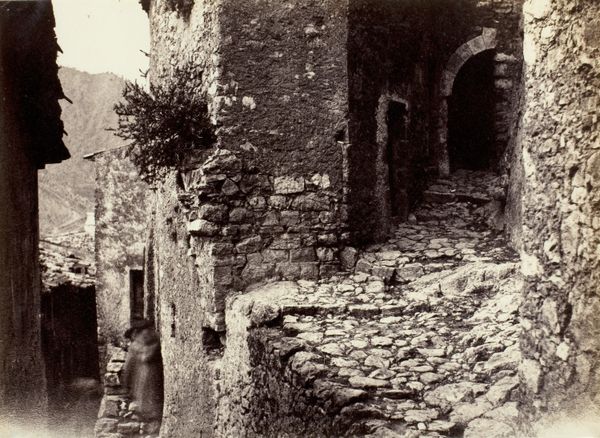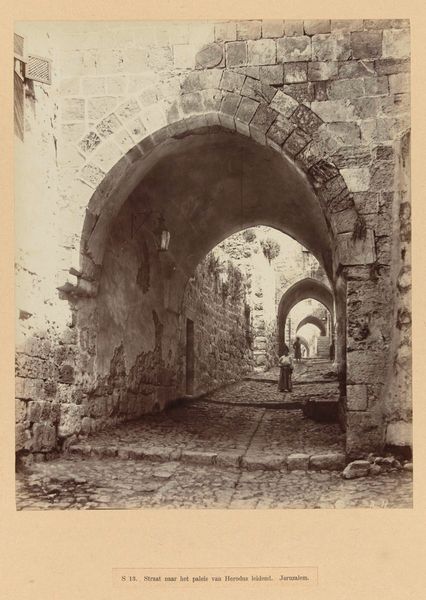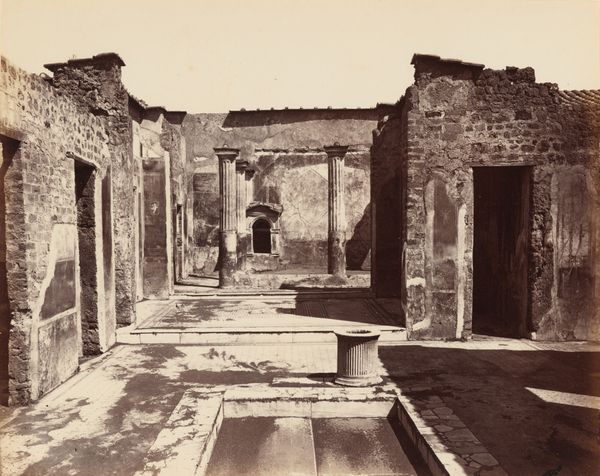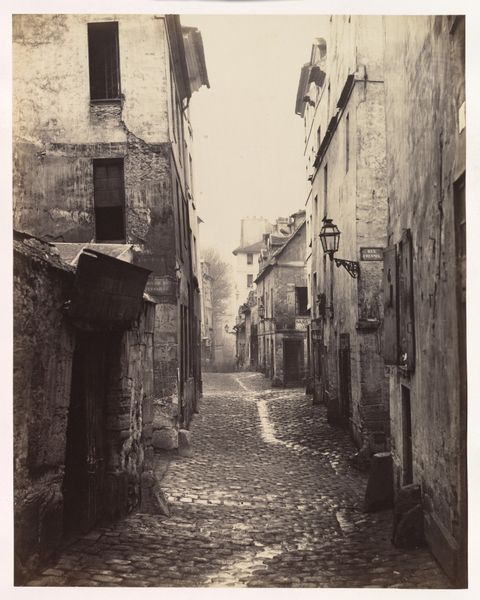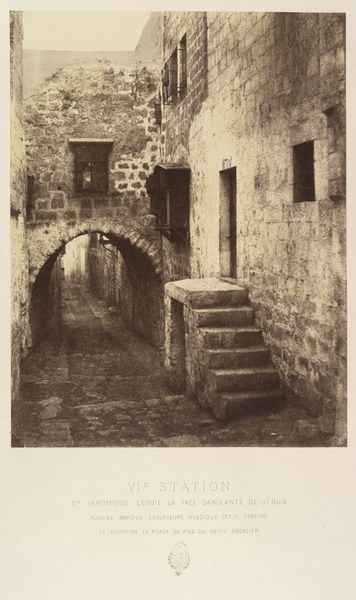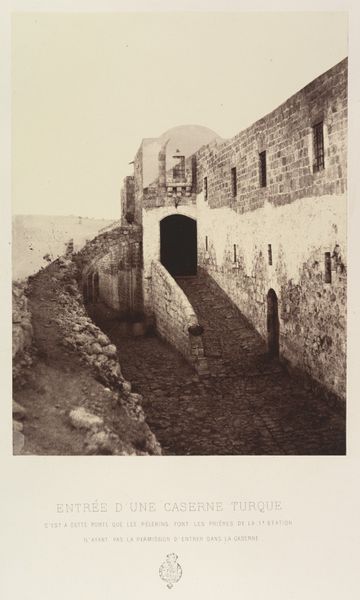
albumen-print, print, photography, albumen-print, architecture
albumen-print
historic architecture
photography
ancient-mediterranean
cityscape
watercolor
albumen-print
architecture
realism
Dimensions: 10 15/16 x 8 13/16 in. (27.78 x 22.38 cm) (image)14 x 11 in. (35.56 x 27.94 cm) (mount)
Copyright: Public Domain
Curator: What a wonderfully evocative scene. Félix Bonfils’ “Arc de l'Ecce Homo,” an albumen print from the 1870s, transports us to Jerusalem with striking realism. Editor: Evocative indeed. The muted tones and the receding perspective give it such a tangible sense of history and place. I’m drawn to the way the light emphasizes the texture of the stone, creating a powerful sense of depth. Curator: Absolutely. Bonfils was a master of using light to define form. Consider the composition. The framing of the archway acts as a window to the cityscape beyond, which highlights both immediate and distant architectural features. Beyond the formal organization of elements, it reflects 19th-century orientalist fascinations. How the ‘holy land’ came to be packaged and consumed for Western audiences is something I ponder. Editor: I agree. His work provided a window for the West to perceive and frame this part of the world. Thinking about the perspective offered to European audiences: that framing would reinforce certain political and cultural assumptions, wouldn't it? It's never just an objective rendering. Curator: Precisely. Also, note the small figure seated near the arch. Its placement deepens our engagement and adds a sense of human scale within these ancient spaces. Semiotically, we can discuss it as the “oriental other”, reinforcing notions of power for some audiences. Editor: Good point. What strikes me is the composition's reliance on geometry. The buildings establish clear vertical lines and contrast them against the curved archway. This juxtaposition highlights both the natural terrain and human architecture. It really is powerful! Curator: Indeed. That deliberate construction points to Bonfils' skillful arrangement of the scene for maximum impact. Editor: Studying these archival photographs offer critical insights into cultural perception and historical contexts. It encourages reflection on image construction and the influence of art. Curator: Exactly. Seeing the rich composition prompts thoughts about visual techniques, meaning generation, and a sense of history.
Comments
No comments
Be the first to comment and join the conversation on the ultimate creative platform.
